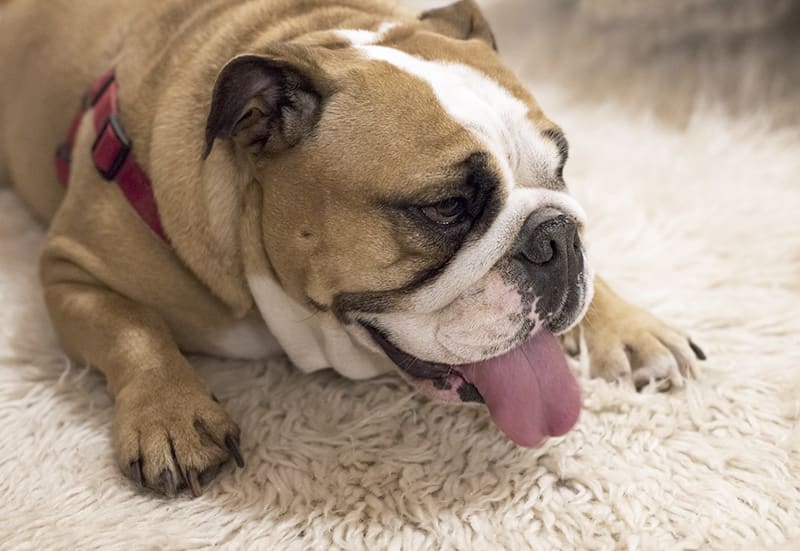Hot summer weather in Flat Rock NC means that our vets are seeing a rise in the number dogs arriving at our emergency veterinary clinic with symptoms of heatstroke. Here are some of the symptoms of this potentially deadly condition, as well as what you should do if you think that your dog may be suffering from heatstroke.
As humans, our bodies are able to sweat in order to cool down. Dogs on the other hand eliminate heat from their bodies by panting. If your dog becomes extremely hot, and panting isn't sufficient to cool their core body temperature, their body temperature will continue to rise and they may experience heatstroke.
Heatstroke is a very serious condition that can quickly become fatal if not treated immediately. That's why it's important that all pet parents know the signs of heatstroke in dogs.
What causes heatstroke in dogs?
Any hot environment can cause heatstroke in dogs. That said, the most common cause of heatstroke is a careless action by a pet parent, such as leaving their dog in a car on a hot day or forgetting to provide sufficient water and shade when their pet is outdoors in the hot summer weather.
Although any dog can suffer from heatstroke, some dogs are more prone to the condition than others. If your dog has thick fur, a short nose or suffers from any underlying medical conditions, they may be more susceptible to heatstroke.
It's important to note that it isn't only neglected dogs who end up in our emergency vet hospital with heatstroke. Even well cared for pets who enjoy nutritious food, plenty of exercise and fun outdoor playtime need to be closely monitored for symptoms of heatstroke, on hot and humid days.
What are the symptoms of dog heatstroke?
Excessive panting is the most obvious symptom of heat stroke in dogs however, other symptoms that pet parents should watch for include drooling, reddened gums, vomiting, diarrhea, mental dullness, loss of consciousness, uncoordinated movement, and collapse.
Symptoms of heatstroke in dogs should always be treated as an emergency! These symptoms can indicate serious medical problems and cause unseen issues, such as swelling of the brain, kidney failure, intestinal bleeding and abnormal clotting of blood. Immediate veterinary care is highly recommended if you think that your dog has heatstroke.
What should I do if I think my dog has heatstroke?
If your dog is showing signs of heatstroke it is important to get your pet emergency medical attention as quickly as possible. If you think that your dog has heatstroke, call your veterinarian or the nearest emergency animal hospital and tell them you are on your way. While travelling to the vet's office, keep the windows open and the air conditioner on full.
Until you can get to the veterinarian, be sure to: remove your dog from the hot environment immediately, let them drink as much cool water as they want but do not force them to drink, and cool your dog off by placing a towel soaked in cold water on their back.
How is heatstroke in dogs treated?
Typically treatment of heatstroke in dogs includes intravenous fluid therapy to replace fluids and minerals. The vet treating your dog will also monitor your pet for secondary complications such as electrolytes abnormalities, kidney failure, development of neurologic symptoms, abnormal clotting, and changes in blood pressure.
How can I prevent my dog from developing heatstroke?
If you own a dog, it is essential to be aware of the outside temperature and take appropriate measures to prevent your pets from developing heatstroke, especially during the hot and humid summer months. When your dog is spending time outdoors be sure that their space is well-ventilated with access to plenty of water and shade. If your dog joins you on a car journey, be sure that their crate has good ventilation, and never ever leave your dog in a car with the windows closed.
If your dog is showing signs of heatstroke contact your regular vet for an emergency appointment. If your vet is unavailable, contact our office immediately. Our vets are experienced in treating emergencies and our animal emergency hospital is open 24/7, 365 days a year, to care for your dog.
Looking for a vet in Flat Rock?
We're always accepting new patients, so contact our veterinary hospital today to book your pet's first appointment.Related Articles View All
Caring for a Dog With a Broken Jaw
Broken jaws are surprisingly common in dogs. In today's post, you will learn about the most common causes of broken jaws in dogs, how they can be repaired, and advice on caring for your pup as their jaw heals.
Best Small Dog Breeds for Apartment Living
You’ve decided to add a furry family member to your household but you're just not sure what breed to get. Here, we share a little information about some of the best small dogs for apartment living.
What does ringworm look like on a dog?
Contrary to its name, ringworm is a fungus comparable to athlete's foot. It produces infective seeds known as spores, which are highly resilient and difficult to eliminate in the environment. Ringworm may infect the skin of dogs and other animals. Today, our vets in Flat Rock discuss ringworm in dogs and what it looks like.
Dog Dental Care: How to Take Care of Your Dog's Teeth
Dogs can be impacted by tooth decay and gum disease just like people can. That's why caring for your dog's teeth is an important aspect of protecting their overall health. In today's post, our Flat Rock vets share tips on how to clean your dog's teeth and more.

